Making long term predictions is hard… but for many products, you can make reasonable estimates. One of the keys to unlock this potential is having a better understanding of how people make buying decisions. If you know what drives people, you can anticipate which products or service could have a higher adoption rate.
To map & track these decisions over time we’ve developed a framework the “Value Disc”. This method is based on an analysis of the main value drivers of a certain product. Next, it looks at how these value drivers could evolve in the future. By placing weights on each zone, we can calculate a Future Adoption Score. The higher, the more likely this product can thrive in the years to come.
This would be an analysis based on potential future consumer behavior. In reality, you will take other factors into account as well. (organization & capabilities, legal context,…)
How to use this framework to predict the future? (4 cases explained)
Case 1: Amazon Alexa

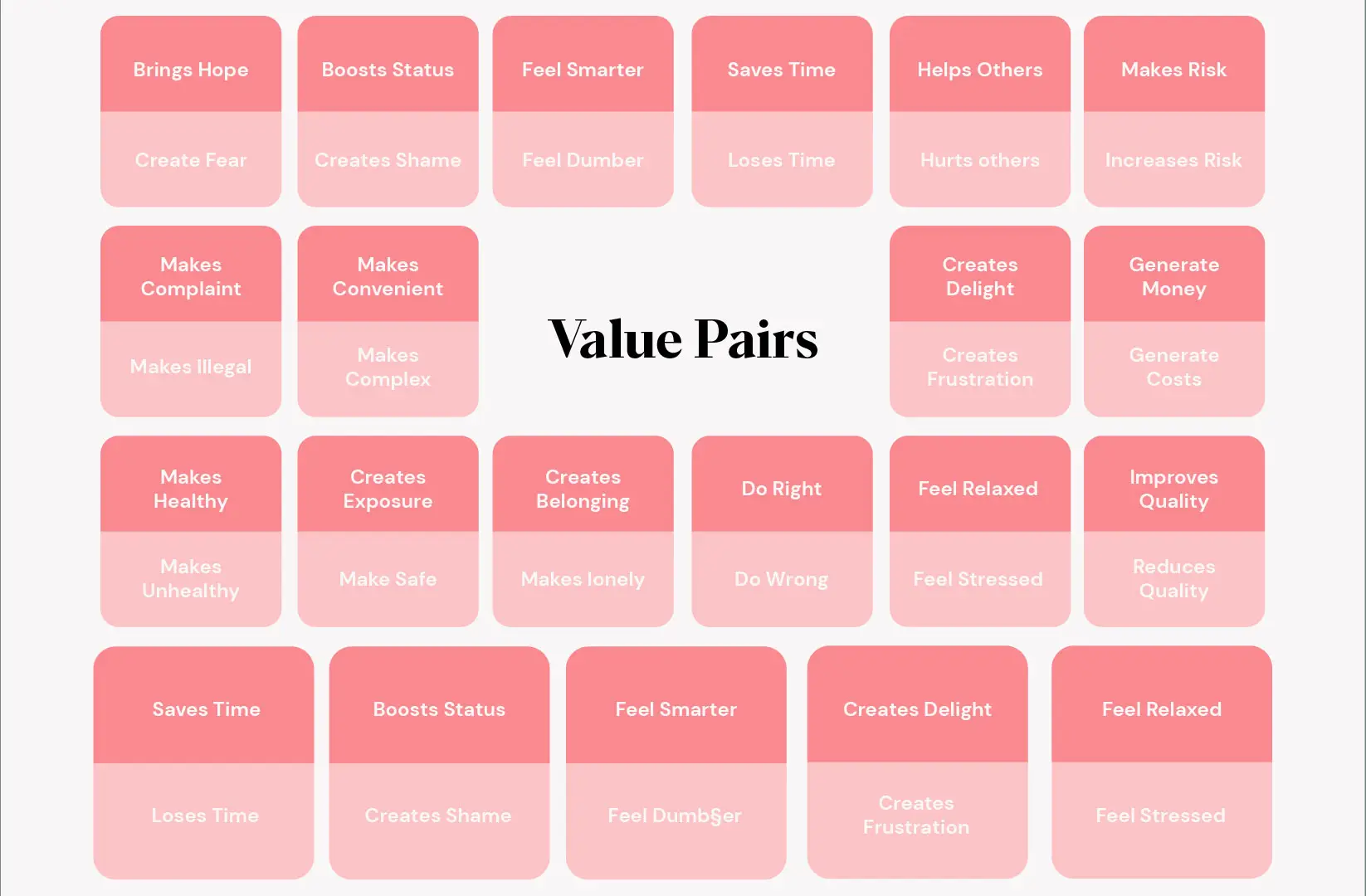
Example step 1: Pick the 5 most relevant value pairs
- Product A creates value because it lets you help people
- Product B creates value because it lets you make money
- …
- Product C creates value because it takes away shame
- Product D creates value because it makes less unhealthy
- …
Out of a set of +15 Value Pairs, you will pick the 5 most relevant ones a consumer would use to evaluate whether or not this product is worth buying. Often, we do not consider more than 5 values to make a buying decision. If you zoom in on specific subsegments, this selection will be slightly different. But in this exercise, we take a more general point of view.
For Amazon Alexa, the most dominant Value Pair is “Feeling Smarter — Feel Dumber”. Next, to this pair, we would go for the following 4 sets:
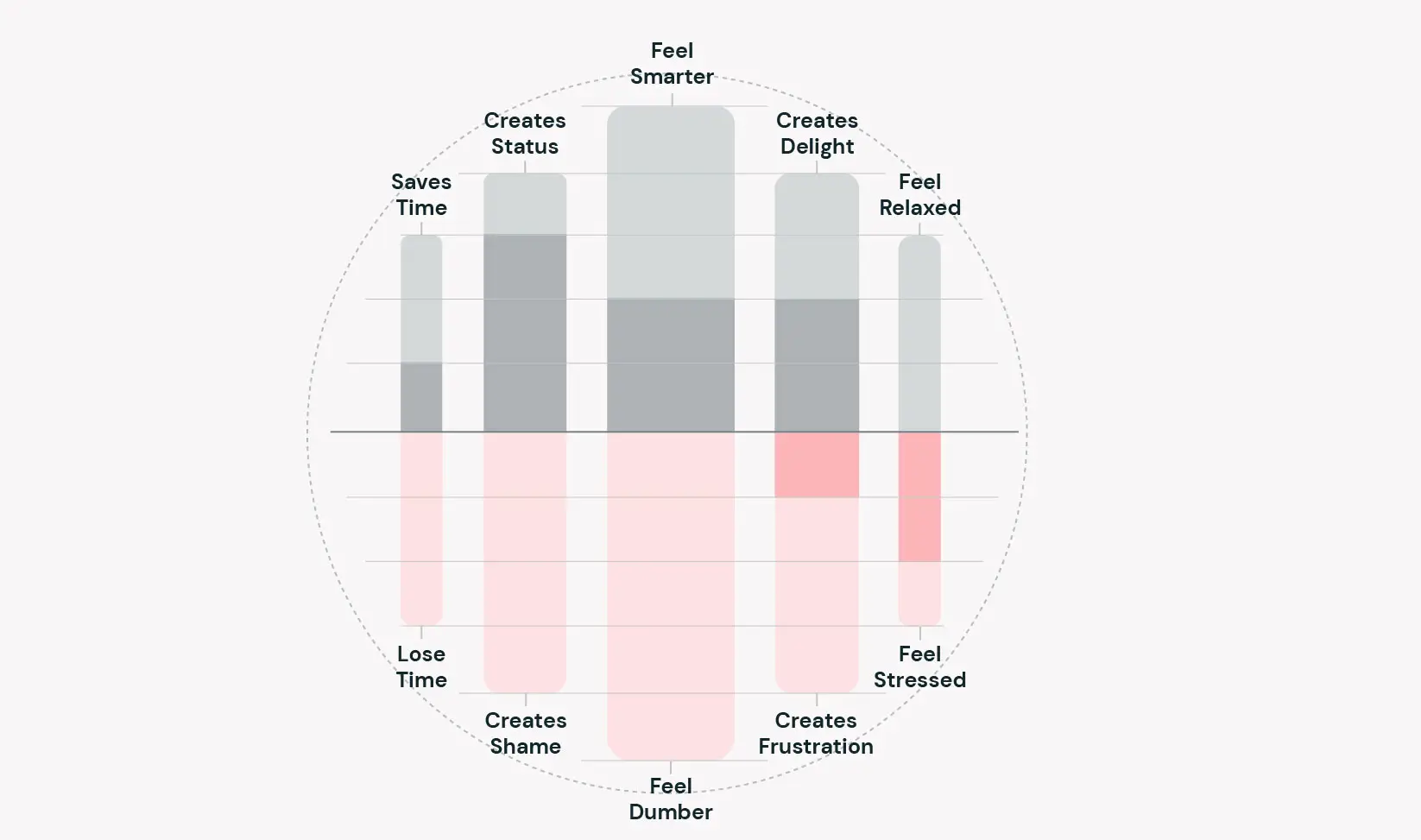
Step 2: Put each value pair on the value disc
Once ranked, we can put each pair on the Value Disc. The more influence a pair has, the higher it can be scored.
At the center of this graph, we start with FEEL SMARTER. We would rate this at 2/5. People feel some sort of superpower with this device in their house. Always on, always available to give you instant knowledge or control of other appliances. Although people value the current use cases, there is a lot of potential left to do more on this axis.
Next, the Value Pair linked to CREATES STATUS. At this moment, the novelty of a smart speaker gives the owner some early-adopter karma. It’s present today but will wear off soon. We will get back to this later.
What about the Value Pair “Creates Delight — Creates Frustration”? Yes, these devices are fun to use and will amaze people with certain capabilities. But in this same spectrum, people regularly bump into the current limitations. Certain queries can’t be asked, wrong answers are given, etc. This will also create frustration. This is definitely a mixed signal and always difficult to forecast.
At the edges, you will put the least important value drivers. People will be able to save time, although limited (Talking versus typing on their smartphone). One of the downsides looks at the impact of privacy concerns and the stress or anxiety that it triggers for certain people.
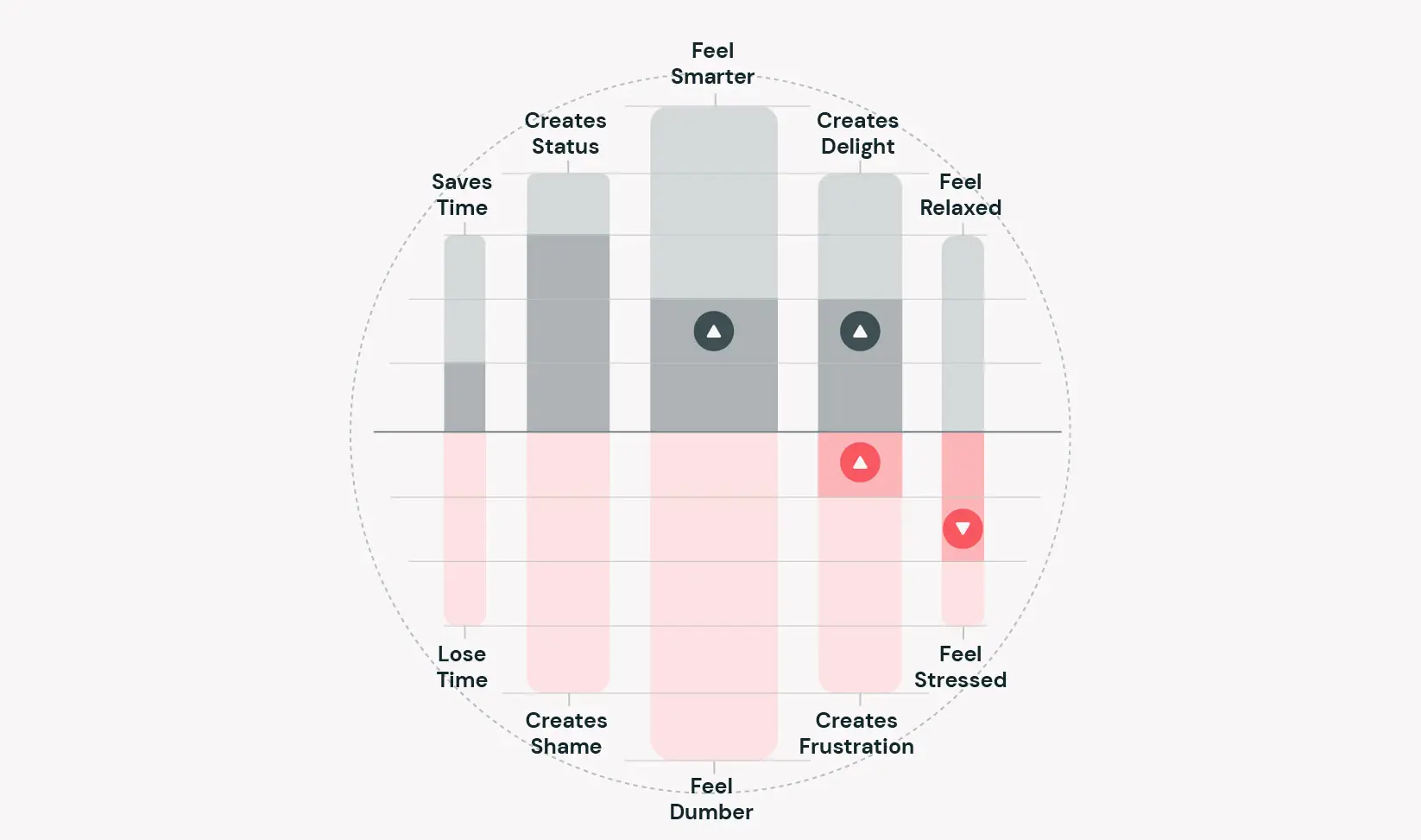
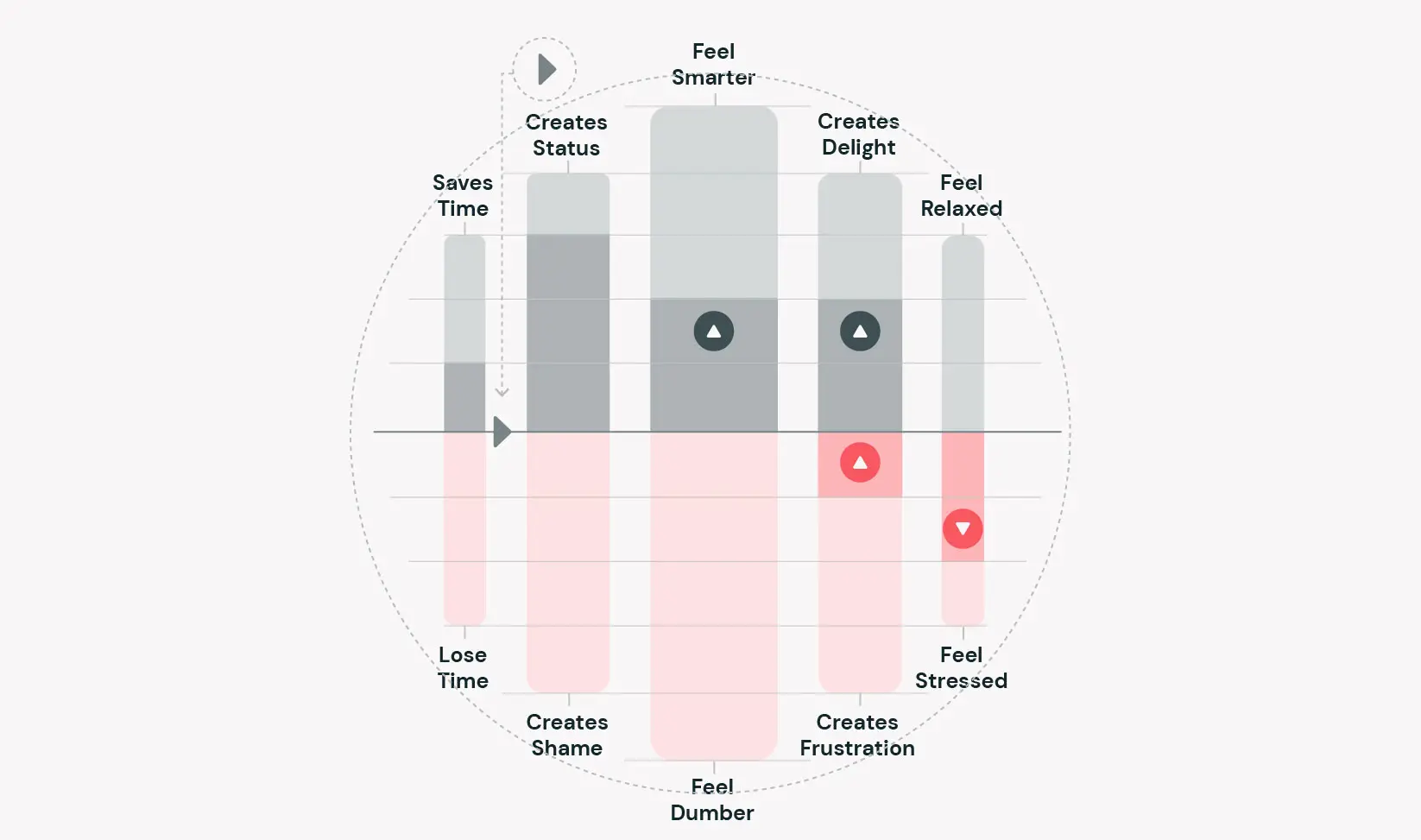
Step 3: How will a product evolve?
Once you have this framework in place, it’s worth discussing how each Value Drive will evolve. We mark potential changes on the Value Disc with the following icons.
Improving software & AI capabilities will make a user feel smarter over time and will at the same time create even more delight. Lower error rates will take away some of the frustration. On the other hand, we anticipate that more awareness of privacy breaches could increase anxiety & stress.
Another factor is how the relative importance of Value Pairs will shift in the future. In this specific example, we assume that devices like this become commodities. The status that comes with this device will fade away. In contrast, the amount of time that can be saved will increase with further software updates. On this visual, we indicate these shift with a small grey arrow.

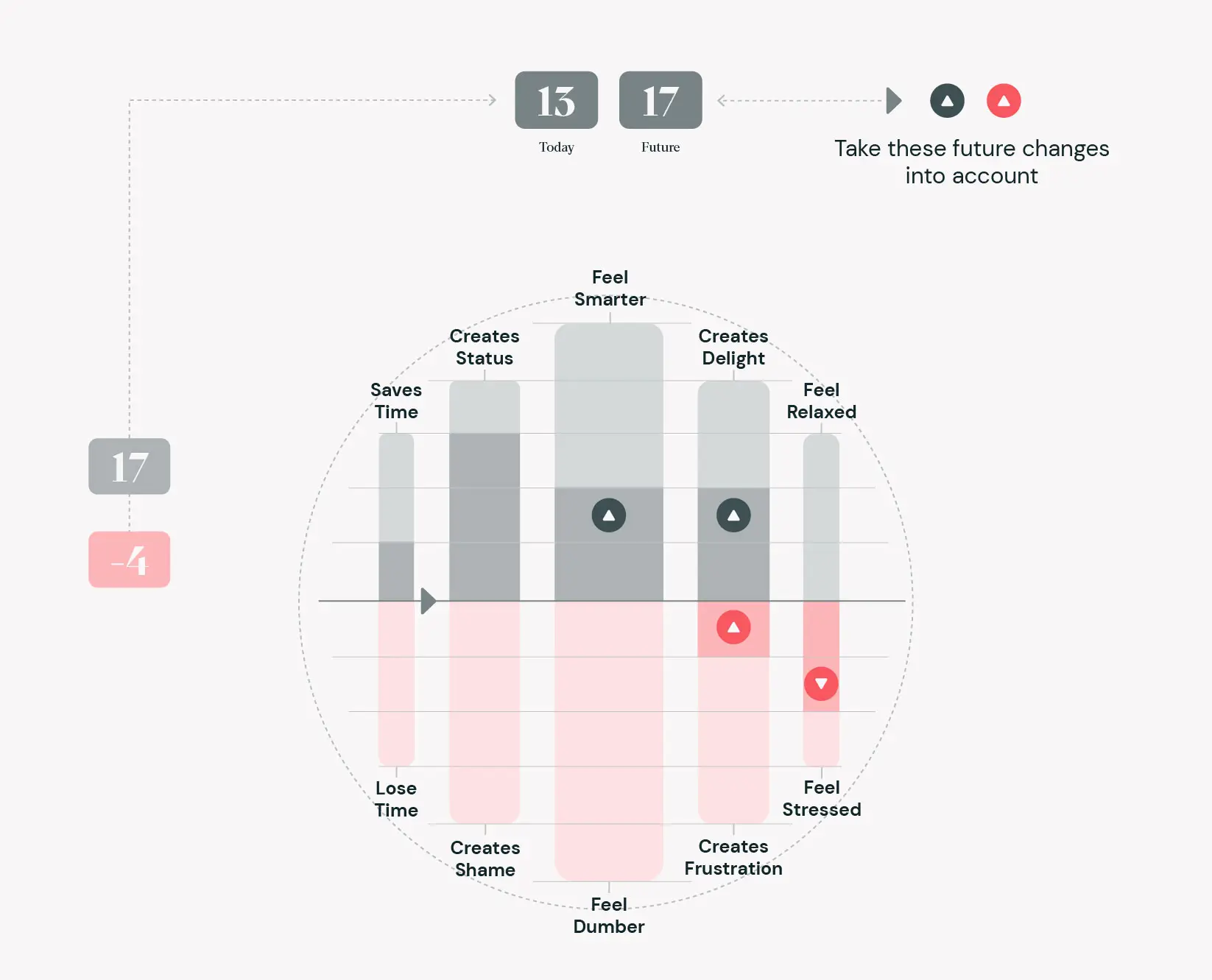
Step 4
Once all Value Pairs are rated, we can look at the weighted results. Each zone has a simple value assigned to it. By a simple calculation, you get the current score.
More interesting is the calculation of the potential. By taking into account all the expected changes, we can write down a Future Adoption Score. The higher the scores, the more potential the product has in the future. Based on these metrics, it seems Alexa has a bright future ahead!
Case 2: Vaping

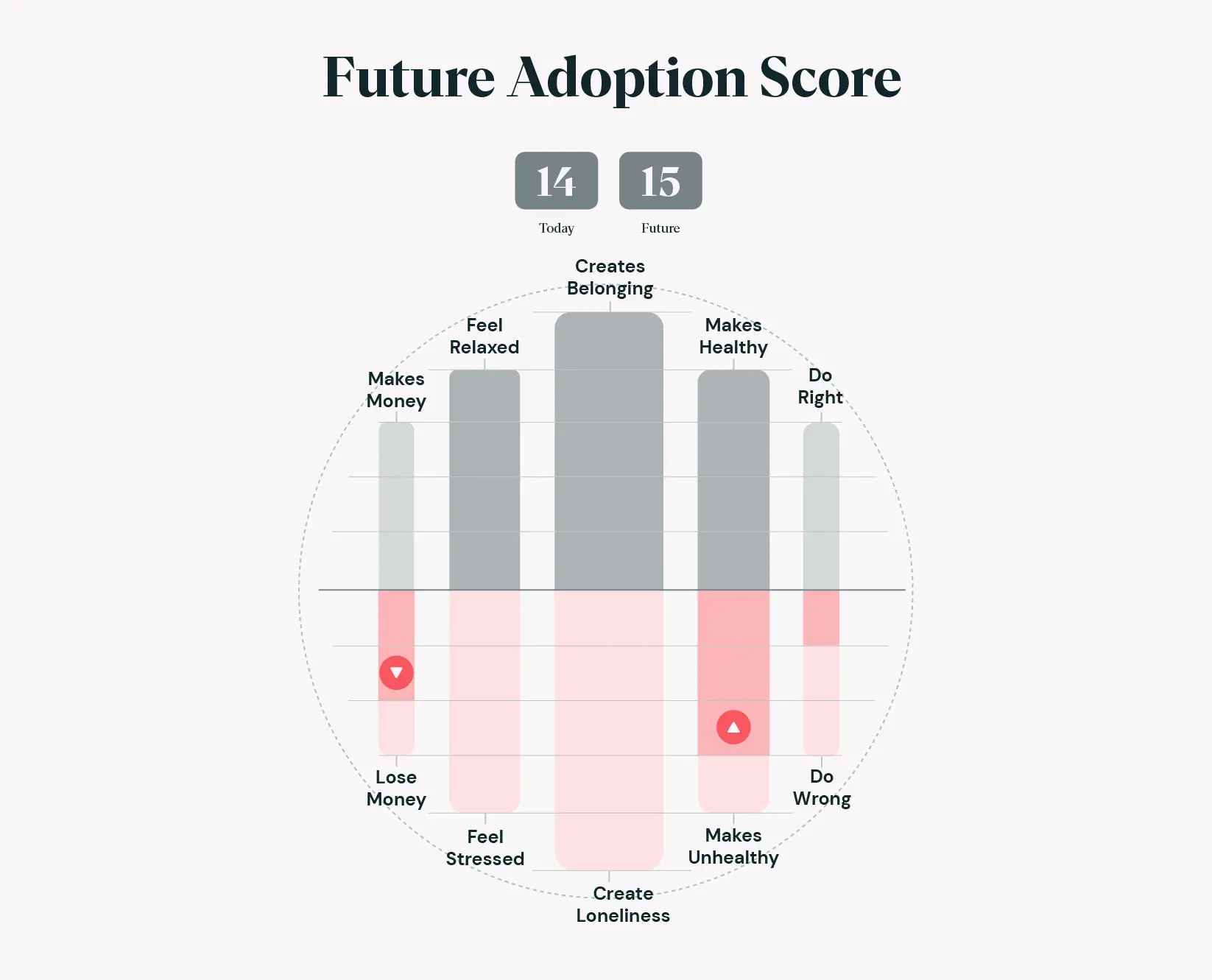
If you look at the Value Disc of Vaping, you will immediately notice the extremes. At the center, you can see how vaping created a whole new subculture. Many young people adopted vaping into their social lives to enhance (unconsciously) their sense of belonging. This is a very strong driver! Next, people use Vape to feel more relaxed.
Case 3: eBikes
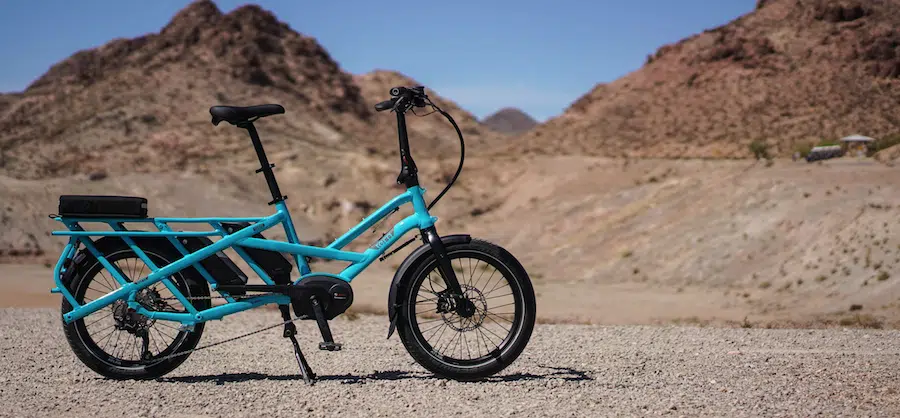
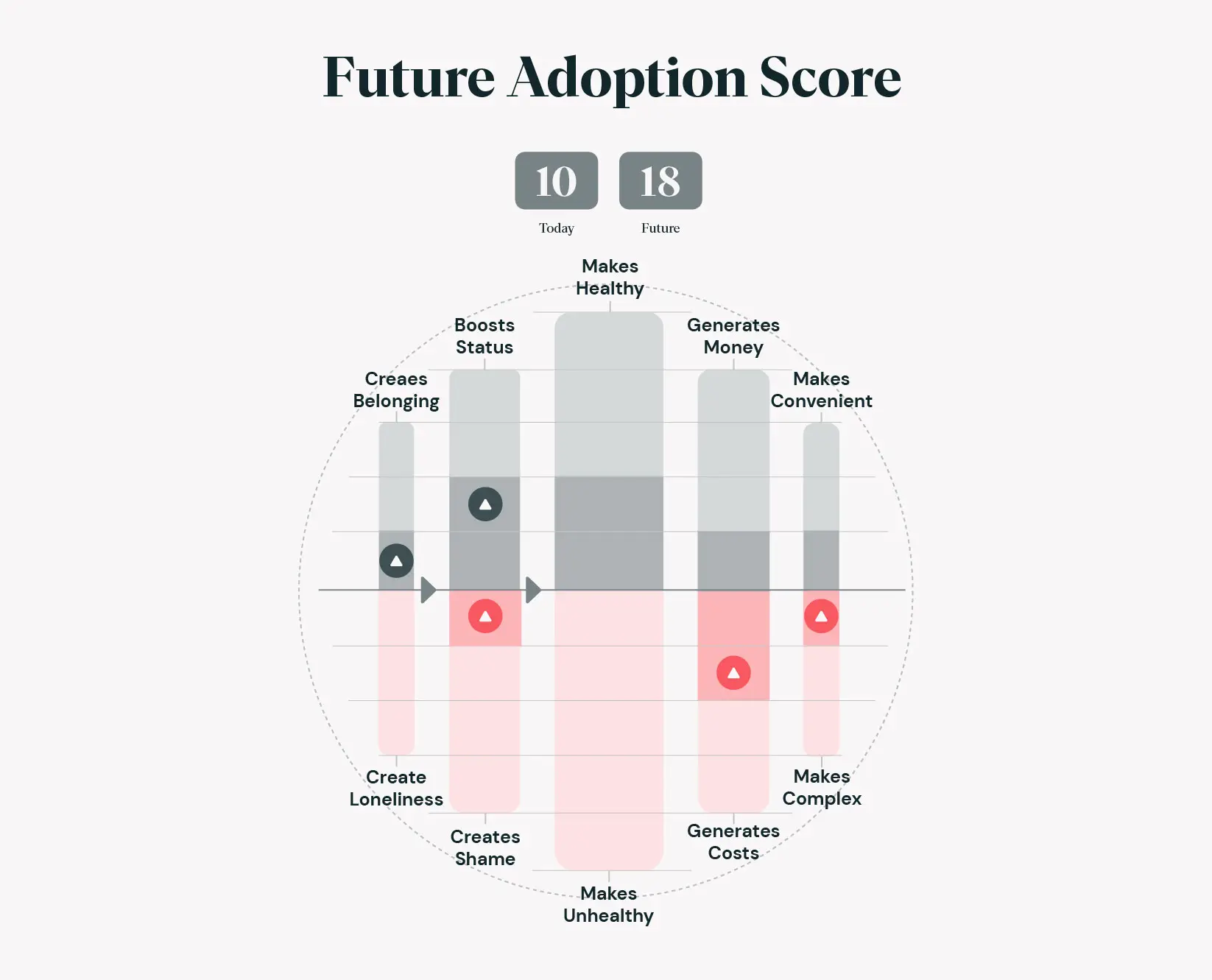
The enormous rise of this product category can be explained with the Value Disc. Many factors had an impact so far, but let’s look at the 5 most prominent value drivers. Many people pick bikes and ebikes because they are more healthy than using their car. An interesting aspect to look at is the Status element. Due to the rising concerns about climate change, many people want to be more vocal about using climate-friendly products. The negative reputation & shame that ebikes are only for old ladies are quickly fading away.
Linked to the eco-movement, some people also feel a sense of belonging to their eco-peers. Both the status and the sense of belonging category will become more important in the next few years so we expect a switch with the Healthy Value Driver.
Many subsidies and monetary incentives are created by governments to encourage ebike adoption. People feel that these devices make money for them. Also, the acquisition cost is rapidly falling.
At last, there is the aspect of convenience. With an ebike, you can park almost everywhere, you get assisted power for a more pleasant ride, etc. On the other hand, people are worried about theft. Also recharging is not the most pleasant experience.
If you look at all the forecasts of these Value drivers, you can clearly see that ebikes adoption will only become bigger in the next few years!
Case 4: Hello Fresh/ Blue

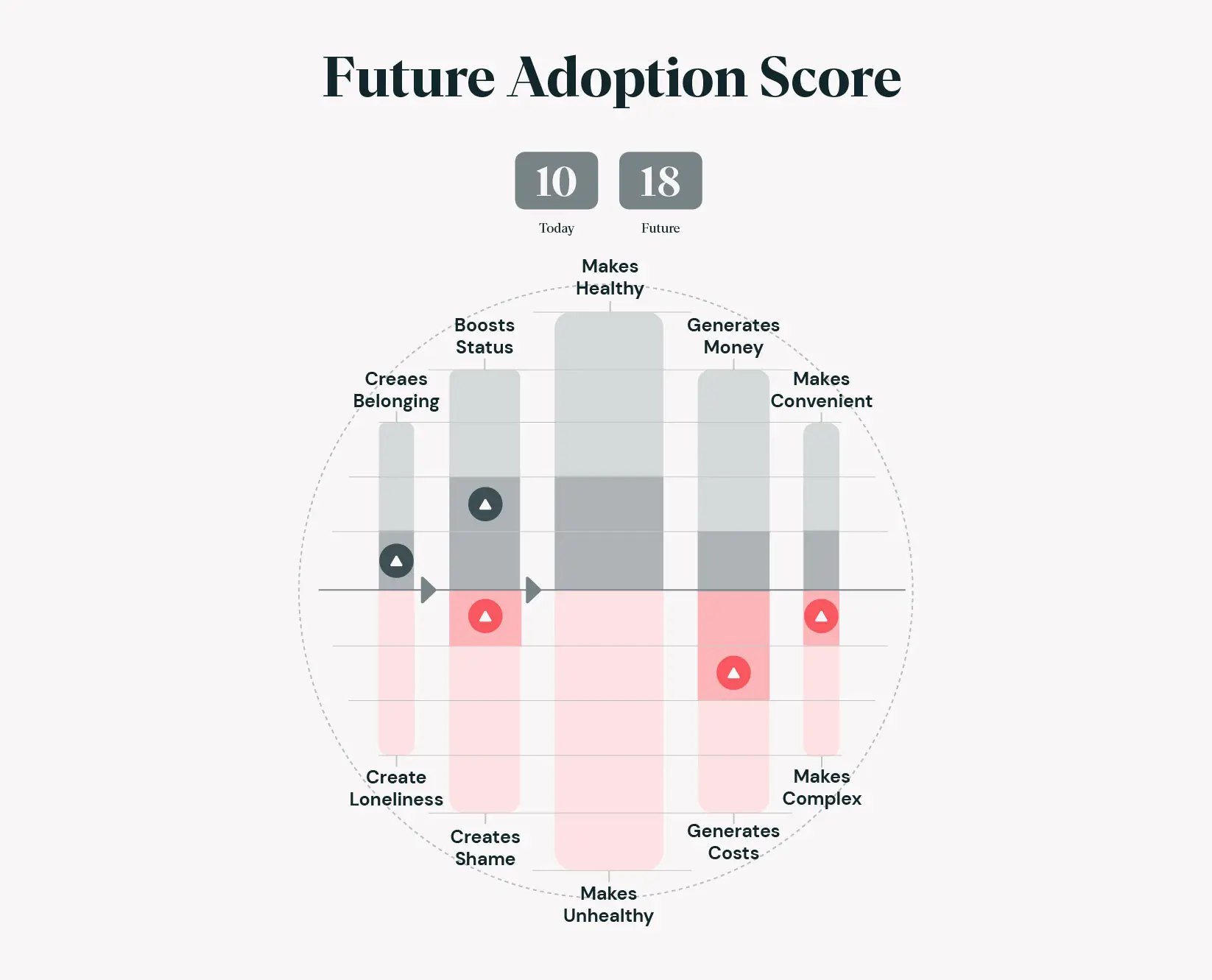
While home-delivered grocery boxes were on the rise a few years ago, their growth is now stagnating. One of the more interesting elements here is the competition that’s happening at the Convenience Value Pair. Yes, these boxes are easier than going to a store but VC-fueled meal delivery services are becoming so widespread, that users see those as convenient alternatives.
Also, the novelty and delight of the first years are wearing off. On top of that, consumers are becoming more aware of the numerous subscription services that they have running. As a result, they are cutting down the least valuable services.
On the positive side, people still see these boxes as healthy alternatives to fast-food etc. The last element to consider is that not every person is able to follow the steady pace of deliveries. Too often good meals become waste and they want to do the right thing. This creates a feeling of guilt in people.


